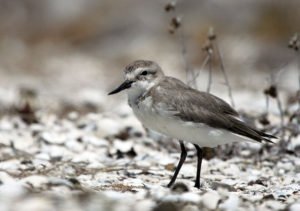Stuff and the NZ Herald have both been running a series of environment stories this week, with Stuff focusing on ‘forgotten species’ and the Herald quizzing scientists on the environment.

Stuff science and environment report Ged Cann’s ‘Forgotten Species’ series has challenged the idea that we’re doing well on conservation, instead highlighting five species that are threatened but aren’t given much airtime: black-billed gull, orange-fronted kākāriki, banded dotterel, Whitaker’s skink and the wrybill.
Research from Lincoln University suggests 70 per cent of the country feel that New Zealand’s native plants, animal and fish were doing well, which study co-author Ross Cullen says likely boils down to a focus on a dozen or so “charismatic species” like kākāpō and kiwi.
50 Questions on the Environment
NZ Herald science reporter Jamie Morton lined up five experts to answer 50 questions on the environment, including biosecurity, biodiversity and climate change.
Massey University freshwater ecologist Professor Russell Death discussed the state of New Zealand’s rivers and lakes, saying “it is pretty much as you hear reported in the news most days”.
“Things have got too bad now we have to start doing more truly effective actions, not having countless meetings to only decide that ‘it’s a real issue and we must do something’. Let’s just do what we know we should. We have most of the science clear; many people just don’t like the answers.”
On marine ecosystems, University of Auckland’s Professor Simon Thrush said while many marine birds and mammals range outside the areas of ocean under our direct control “that should not stop us reducing the stress on these species within our waters”.
“In the past humans have often considered the oceans an inexhaustible resource, we now know this is not true. But we cannot do this by ourselves and we need to be open to working on this collective problem – after all we are talking about seven tenths of the surface of planet Earth.”